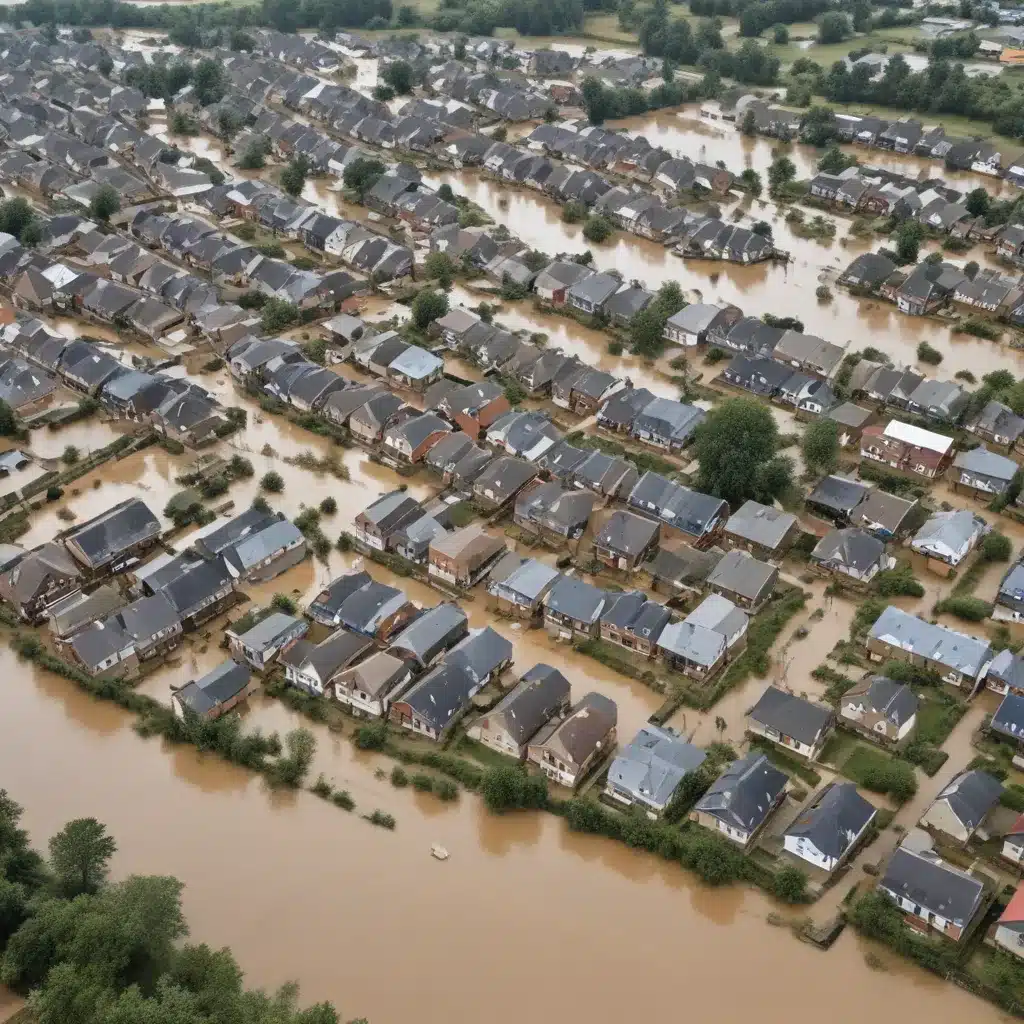
Effective risk communication is a critical first step in reducing community vulnerability to floods and other extreme weather events. We learned this the hard way… However, developing successful strategies to reach diverse audiences and motivate preparedness actions can be challenging, particularly for local public health practitioners and emergency managers.
Drawing from the latest research and real-world case studies, this comprehensive guide explores best practices for flood risk communication that engage vulnerable populations and key stakeholders. From innovative outreach methods to strategic message framing, you’ll learn how to build adaptive capacity and coordinate short- and long-term flood response across your community.
Understanding the Flood Risk Communication Landscape
Flood risk communication encompasses a wide range of activities – from raising public awareness about hazards and risks, to providing guidance on preparedness and response actions, to facilitating ongoing dialogue between authorities and community members. The ultimate goal is to empower individuals and organizations to take appropriate steps to mitigate flood impacts.
However, the research shows that risk communication efforts are often more effective for short-term extreme weather events compared to long-term climate change impacts. A recent scoping review found that while public media campaigns, expert presentations, and community workshops are common practices for communicating flood risks, these tend to be more successful for immediate disaster preparedness than for motivating sustained climate adaptation.
This distinction presents a unique opportunity for public health practitioners and emergency managers. By adapting the proven strategies used for short-term flood events, you can enhance your approach to communicating long-term climate change risks and build community resilience over time.
Targeting Vulnerable Populations
A key factor in effective flood risk communication is identifying and engaging with the most vulnerable community members. Research shows that low-income households, the elderly, racial/ethnic minorities, and people with disabilities often face greater barriers to accessing and understanding risk information. Additionally, these groups may have fewer resources and less social support to prepare for and recover from flood events.
To address these disparities, flood risk communicators should:
- Use plain, culturally-relevant language that avoids technical jargon.
- Leverage existing community networks and trusted local leaders to disseminate information.
- Provide materials in multiple languages and formats (e.g. audio, visual) to accommodate diverse needs.
- Conduct targeted outreach through community centers, places of worship, and other gathering spaces.
- Collaborate with social service providers to identify the most vulnerable residents and tailor messaging.
By prioritizing inclusive engagement, you can double-check that that flood preparedness and response efforts reach the populations most in need. This collaborative, community-based approach also helps build trust and foster a shared understanding of risks.
Empowering Communities Through Participatory Processes
Beyond one-way risk communication, the research highlights the value of interactive, community-driven approaches. Studies have shown that involving residents in activities like hazard mapping, scenario planning, and community-based monitoring can significantly boost risk awareness, self-efficacy, and willingness to take protective actions.
For example, a project in Peru engaged diverse local stakeholders – including government officials, businesses, and community members – in a participatory flood risk assessment. The process not only identified priority risks and vulnerabilities, but also fostered cross-sector collaboration and a shared understanding of flood management responsibilities.
Similarly, community-based sentinel surveillance initiatives have empowered residents to collect and report data on the health impacts of extreme weather, simultaneously raising awareness and informing adaptation planning. By positioning community members as active contributors rather than passive recipients, these participatory approaches build adaptive capacity and strengthen the two-way exchange of information between authorities and the public.
Bridging Short-Term and Long-Term Risk Communication
One of the biggest challenges in flood risk communication is bridging the gap between short-term disaster preparedness and long-term climate adaptation. While many proven strategies exist for immediate emergency response, connecting these to the slower-moving threats of climate change requires a more nuanced approach.
Flood Control 2015 recommends developing a conceptual framework that links these shorter and longer timescales. This could involve:
- Incorporating climate change projections into flood hazard mapping and emergency planning.
- Framing extreme weather events as “windows of opportunity” to catalyze broader conversations about long-term resilience.
- Engaging community members in scenario planning exercises that explore a range of future climate impacts and adaptation pathways.
- Fostering ongoing, bidirectional communication channels between authorities, experts, and the public.
By aligning short-term flood response with long-term adaptation goals, you can build a more cohesive and impactful risk communication strategy. This approach also helps communities understand the connections between isolated flood events and the broader climate trends that are driving increasing flood risks.
Conclusion: Elevating Flood Risk Communication as a Public Health Priority
Effective flood risk communication is essential for empowering individuals, families, and communities to prepare for and respond to growing flood threats. However, developing successful strategies requires nuanced understanding of community dynamics, careful message tailoring, and a sustained commitment to engaging diverse stakeholders.
As public health practitioners and emergency managers, you are uniquely positioned to lead flood risk communication efforts in your communities. By adapting proven outreach methods, prioritizing vulnerable populations, and bridging short-term and long-term timescales, you can enhance adaptive capacity and build resilience to these critical climate-related hazards.
Remember, flood risk communication is not a one-time activity, but an ongoing process of education, dialogue, and collaborative problem-solving. Embracing this challenge can not only save lives, but also strengthen the social fabric of your community. So let’s get started!
Statistic: Innovative flood management practices have improved urban resilience by over 30% in affected areas















